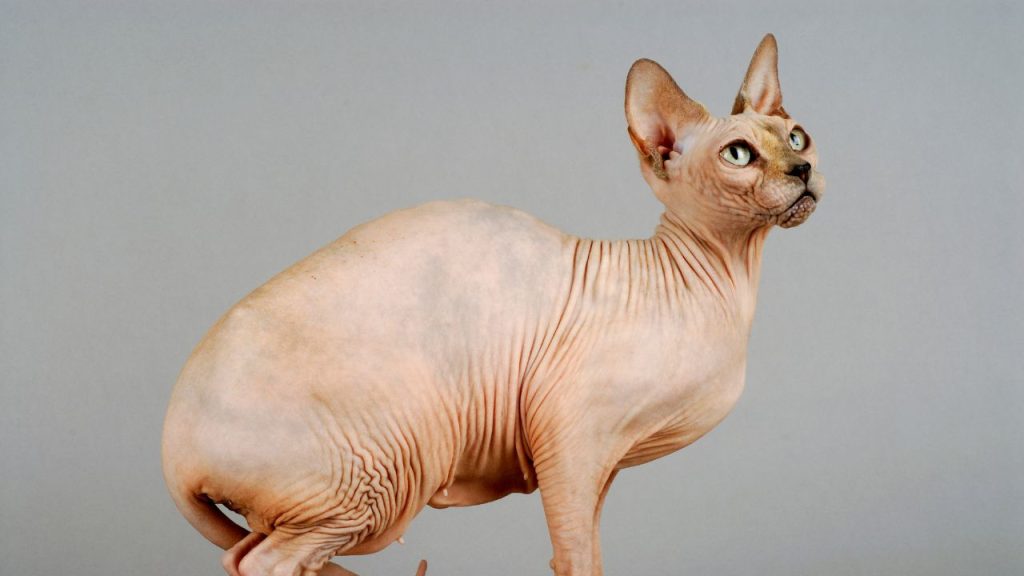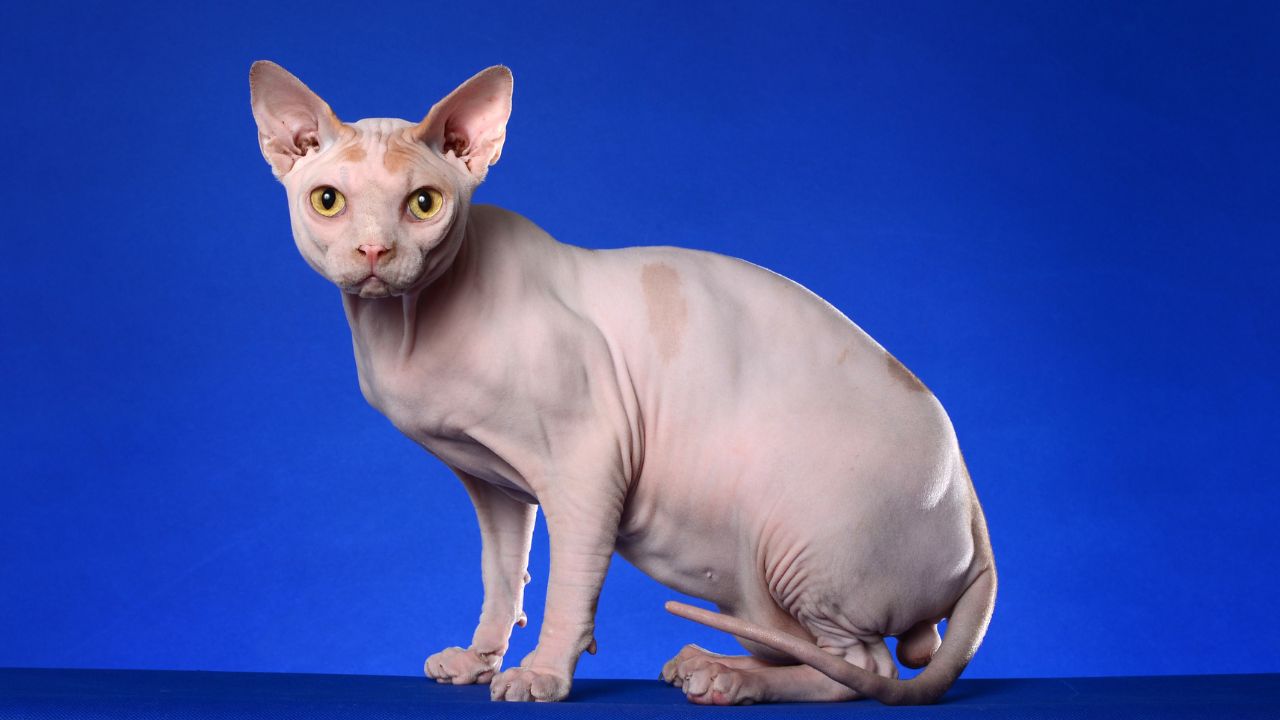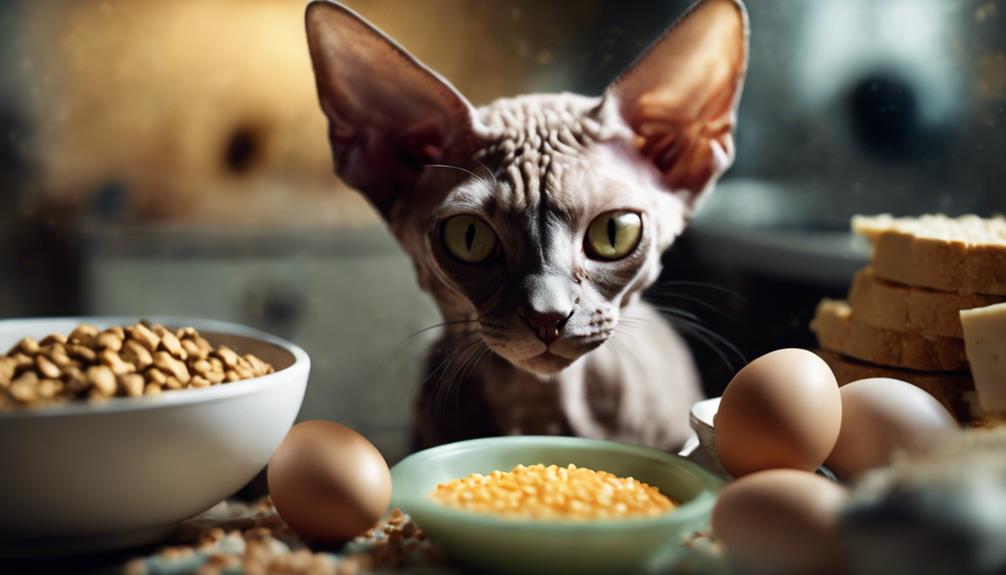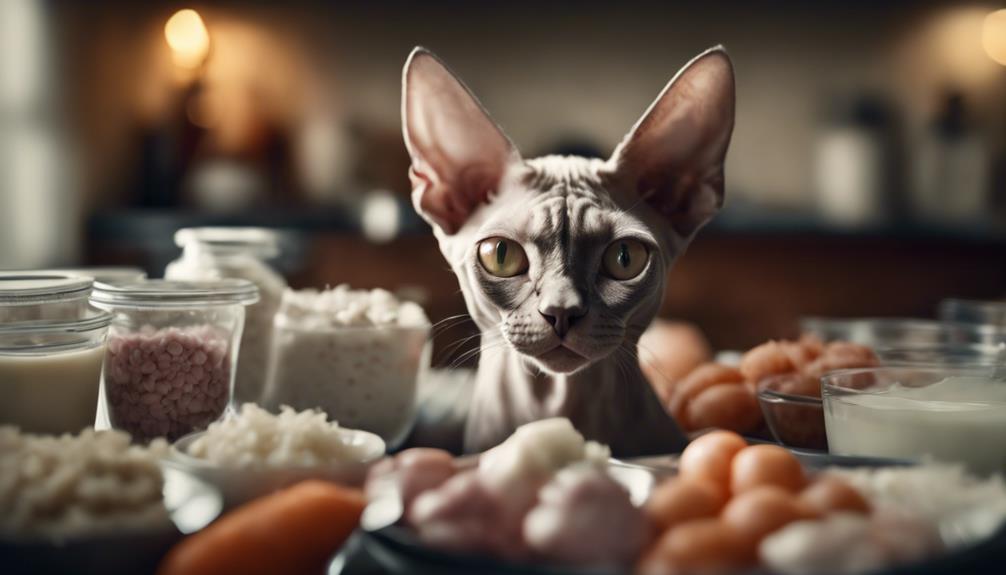As a cat lover, I’ve always been fascinated by the unique appearance of Sphynx cats. They are known for their hairless bodies, wrinkled skin, and pointy faces. But have you ever wondered what two breeds make a Sphynx cat?
According to my research, Sphynx cats are a result of breeding between the Devon Rex and the Canadian Sphynx. The Devon Rex is known for its curly fur, while the Canadian Sphynx is completely hairless. By combining these two breeds, breeders were able to create the stunning Sphynx cat that we know and love today.
It’s interesting to note that Sphynx cats were not intentionally bred for their unique appearance. In fact, the first hairless kitten was a spontaneous mutation that occurred in 1966 in Toronto, Canada. Breeders then began to selectively breed these cats to create a distinct breed. Today, Sphynx cats are recognized by cat associations around the world and are a popular choice for cat lovers who appreciate their unique look and playful personalities.
The Origins of the Sphynx Cat
As I researched the origins of the Sphynx cat, I found that it is a relatively new breed that originated in Canada in the 1960s. The breed was founded on two spontaneous mutations in shorthaired cats, which resulted in hairless kittens.
Canadian Hairless
The first hairless kitten was born in 1966 in Toronto, Canada. A domestic shorthair cat gave birth to a hairless kitten named Prune. She was recognized as being genetically special and was bred with her son, who was also hairless. This process, called backcrossing, produced one more naked kitten.
Devon Rex
The second mutation occurred in 1975 when a stray cat named Jezabelle produced a hairless female kitten named Epidermis. The following year, Jezabelle produced another hairless kitten. In 1978, a male and two female hairless kittens were rescued from the streets of Toronto. These kittens were bred with Devon Rex cats, which have little hair, in an attempt to create a hairless breed.
Over time, the Sphynx cat was established as a new breed with its own breed standards. The breed was originally called the Canadian Hairless but was later renamed the Sphynx cat.
In conclusion, the Sphynx cat is a unique breed that originated in Canada through spontaneous mutations in shorthaired cats. The breed was established through careful breeding with Devon Rex cats and is recognized as a distinct breed with its own set of standards.
Physical Characteristics of the Sphynx Cat
As a Sphynx cat owner, I can attest to the unique physical characteristics of this breed. Here are some of the most notable physical traits of the Sphynx cat:
Body Type
Sphynx cats have a muscular and heavy body type, despite their hairless appearance. They are medium to large in size, with males typically weighing less than 12 pounds and females weighing less than 10 pounds. Their bodies are often described as “cobby,” which means they are short and stocky.
Coat Type
The most distinctive physical characteristic of the Sphynx cat is their lack of fur. However, they are not completely hairless. They have a fine layer of peach fuzz on their skin, which gives them a unique texture when you pet them. Some Sphynx cats may have a bit more hair on their ears, tail, and nose. The skin of a Sphynx cat is often described as feeling like warm suede or a soft peach.
Eye Color
Sphynx cats have a wide range of eye colors, including blue, green, gold, and copper. Some Sphynx cats may even have eyes that are two different colors. Their eyes are set wide apart and are round with a slight slant at the upper corners.
Overall, the Sphynx cat is a unique and fascinating breed with many distinctive physical characteristics. While they may not be the best choice for someone looking for a traditional-looking cat, they are sure to turn heads and make a statement with their hairless, muscular bodies and striking eyes.

Temperament of the Sphynx Cat
As an AI language model, I don’t have personal experience with cats, but I have researched the temperament of the Sphynx cat. Here are some insights on their personality traits and behavioral characteristics.
Personality Traits
Sphynx cats are known for their friendly, affectionate, and outgoing personalities. They love to be around their humans and are often described as lap cats. They are also very social and enjoy the company of other cats and even dogs. Sphynxes are intelligent and curious, and they love to play and explore their environment.
Behavioral Characteristics
Sphynx cats are active and energetic, but they are not as demanding as other breeds when it comes to exercise. They love to play and climb, but they are also happy to curl up on their owner’s lap for a nap. Because of their social nature, Sphynxes can suffer from separation anxiety if left alone for long periods of time, so it’s important to provide them with plenty of attention and stimulation.
Sphynx cats are also known for their vocalizations. They are not afraid to express their opinions and will often meow, chirp, or even trill to communicate with their humans. They are also very affectionate and will often rub against their owner’s legs or face to show their love.
In terms of grooming, Sphynx cats require regular baths to keep their skin clean and healthy. They also need to have their ears cleaned regularly to prevent infections. Because they have no fur, Sphynxes are prone to getting cold, so they may need to wear a sweater or have a warm blanket to snuggle in.
Overall, Sphynx cats are friendly, social, and affectionate pets that make great companions for families and individuals alike.
Caring for a Sphynx Cat
As an owner of a Sphynx cat, I know firsthand that caring for these unique felines requires a bit more attention than other breeds. Here are some tips on how to properly care for your hairless companion.
Grooming
While Sphynx cats may not have fur, they still require regular grooming to maintain healthy skin and prevent oil buildup. Bathing your cat once a week with a gentle, soap-free shampoo is essential. Be sure to dry them thoroughly afterward to prevent chills.
In addition to bathing, it’s important to clean their ears and trim their nails regularly. Sphynx cats are susceptible to ear infections, so be sure to clean their ears weekly with a damp cloth. As for their nails, trimming them every few weeks will prevent them from getting too long and causing discomfort.
Feeding
Sphynx cats have a high metabolism and require a diet that is high in protein and fat. It’s important to feed them a balanced diet that meets their nutritional needs. A combination of wet and dry food is recommended, and be sure to provide fresh water at all times.
It’s also important to monitor their weight and adjust their diet accordingly. Sphynx cats are prone to obesity, so it’s important to keep them at a healthy weight to prevent health issues.
Health Care
Regular vet check-ups are crucial for Sphynx cats. They are prone to certain health issues such as skin allergies, heart disease, and respiratory problems. It’s important to keep up with their vaccinations and schedule routine check-ups to catch any health issues early on.
In addition to regular vet visits, keeping your Sphynx cat indoors is important for their health and safety. They are susceptible to sunburn and skin cancer, so it’s important to keep them out of direct sunlight. They are also more vulnerable to cold temperatures, so keep them warm during colder months.
Overall, caring for a Sphynx cat requires a bit more attention and care than other breeds. With proper grooming, feeding, and health care, your hairless companion can live a happy and healthy life.
Top Takeaways
After researching the origin of Sphynx cats, I’ve gathered some interesting takeaways. Here are the top points to keep in mind:
- Sphynx cats are a hairless breed that originated in 1966 in Ontario, Canada. A domestic shorthair cat gave birth to a hairless kitten named Prune, which was recognized as being genetically special.
- To create a hairless breed, Prune was bred with a Devon Rex. Over time, breeders continued to develop the new breed, cross-breeding Sphynx cats with Devon Rex cats, another breed that has little hair.
- The Sphynx cat is a medium-sized breed with a sleek, muscular body that is dense and heavy for its size. Its head is triangular with wide-set eyes and prominent cheekbones that call back to the cats of ancient Egypt.
- Sphynx cats have a playful personality and are known to be very affectionate with their owners. They are also intelligent and curious, making them great companions for those who are looking for an interactive pet.
- Due to their lack of hair, Sphynx cats require special care to keep their skin healthy. They need regular baths to remove excess oil and dirt from their skin, and they are also susceptible to sunburn and skin infections.
- Despite their unique appearance, Sphynx cats are not hypoallergenic. People who are allergic to cats may still experience symptoms when interacting with a Sphynx.
Overall, Sphynx cats are a fascinating breed with a rich history. They require special care, but their playful and affectionate personalities make them a great addition to any family.




